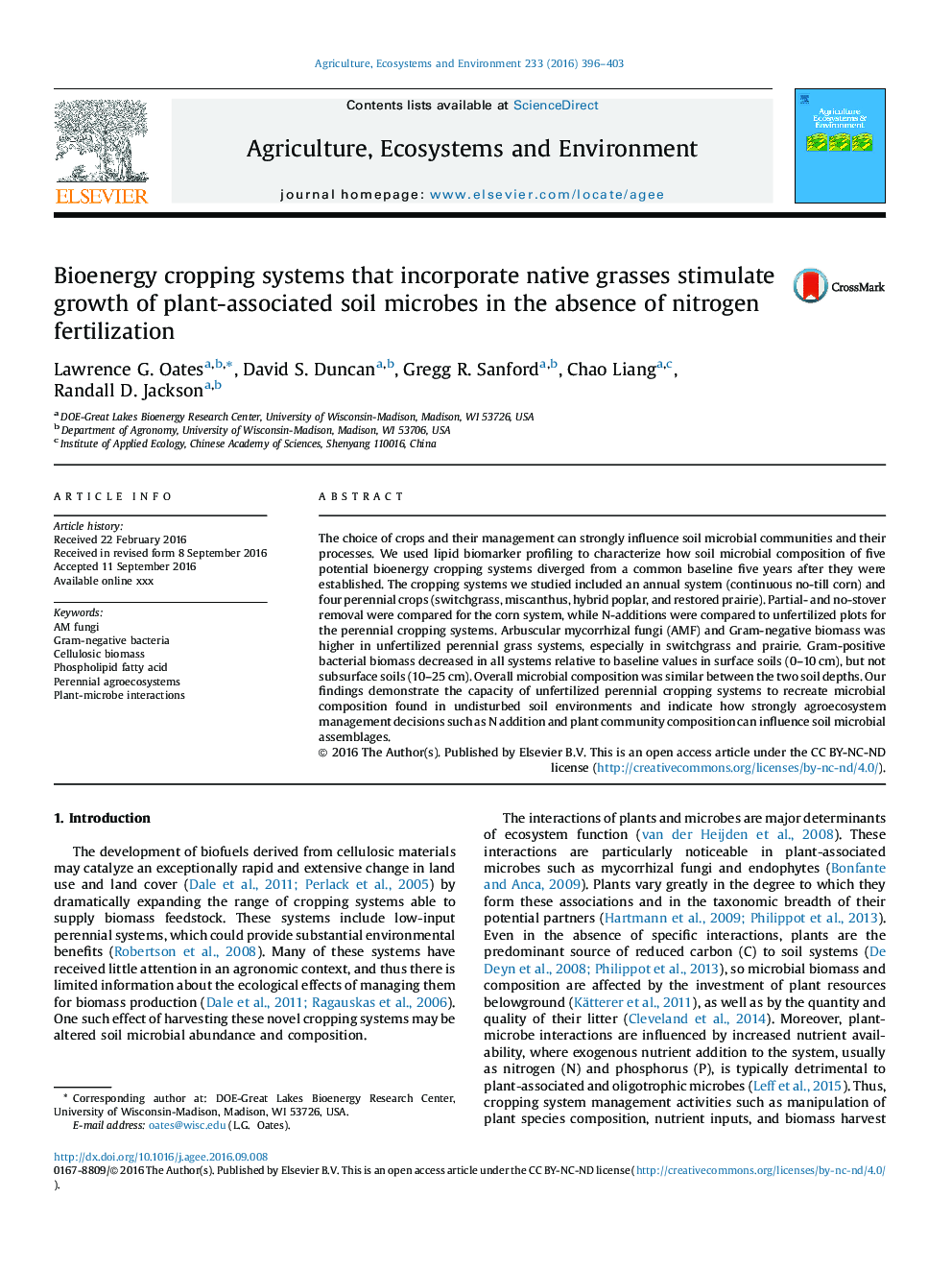| کد مقاله | کد نشریه | سال انتشار | مقاله انگلیسی | نسخه تمام متن |
|---|---|---|---|---|
| 8487293 | 1552019 | 2016 | 8 صفحه PDF | دانلود رایگان |
عنوان انگلیسی مقاله ISI
Bioenergy cropping systems that incorporate native grasses stimulate growth of plant-associated soil microbes in the absence of nitrogen fertilization
ترجمه فارسی عنوان
سیستم های زراعی تولید بیو انرژی که سبوس های بومی را ترکیب می کنند باعث رشد گیاهان می شود در غیاب کود نیتروژن
دانلود مقاله + سفارش ترجمه
دانلود مقاله ISI انگلیسی
رایگان برای ایرانیان
کلمات کلیدی
موضوعات مرتبط
علوم زیستی و بیوفناوری
علوم کشاورزی و بیولوژیک
علوم زراعت و اصلاح نباتات
چکیده انگلیسی
The choice of crops and their management can strongly influence soil microbial communities and their processes. We used lipid biomarker profiling to characterize how soil microbial composition of five potential bioenergy cropping systems diverged from a common baseline five years after they were established. The cropping systems we studied included an annual system (continuous no-till corn) and four perennial crops (switchgrass, miscanthus, hybrid poplar, and restored prairie). Partial- and no-stover removal were compared for the corn system, while N-additions were compared to unfertilized plots for the perennial cropping systems. Arbuscular mycorrhizal fungi (AMF) and Gram-negative biomass was higher in unfertilized perennial grass systems, especially in switchgrass and prairie. Gram-positive bacterial biomass decreased in all systems relative to baseline values in surface soils (0-10Â cm), but not subsurface soils (10-25Â cm). Overall microbial composition was similar between the two soil depths. Our findings demonstrate the capacity of unfertilized perennial cropping systems to recreate microbial composition found in undisturbed soil environments and indicate how strongly agroecosystem management decisions such as N addition and plant community composition can influence soil microbial assemblages.
ناشر
Database: Elsevier - ScienceDirect (ساینس دایرکت)
Journal: Agriculture, Ecosystems & Environment - Volume 233, 3 October 2016, Pages 396-403
Journal: Agriculture, Ecosystems & Environment - Volume 233, 3 October 2016, Pages 396-403
نویسندگان
Lawrence G. Oates, David S. Duncan, Gregg R. Sanford, Chao Liang, Randall D. Jackson,
